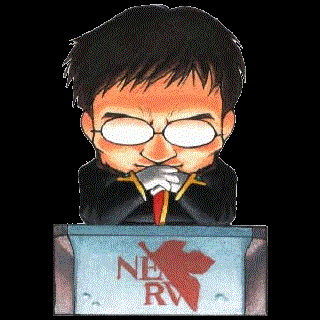And that is why I use Opensuse tumbleweed, no worries ever (zypper takes a snapshot before and after each upgrade, single command to roll back)
Not to mention that a two or three thousand package update is rookie numbers for zypper.
Basically reinstalling your OS because of an GCC update is the only gripe I have with Tumbleweed.
I wonder though, did I have the same with Arch? I don’t remember.
Becareful with glibc
That’s why I have an alias that does an unattended update and then powers off. I run this every night.
Something i can say, did you have ready an snapshot of the system??, cuz too may things can go wrong with that numbre of updates.
If something like that happens, maybe the best option would be to just install a new fresh os lol
Troubleshooting everything that goes wrong will take my lifetime
It’s my experience that Ubuntu and Fedora break if you don’t upgrade often (and then suddenly do after a year), while arch doesn’t… Which is interesting, since it’s supposed to be the other way around…
I think it’s because Fedora and Ubuntu add a lot of new things, while arch just updates it’s packages.
More please. Getting ready to switch from Windows to Linux, been making sure I can install all the -arr I want and get games running, but in Mint.
Now I’m hitting the brakes hard. It’s Arch if that means I don’t have this headache. I’ll need to start over learning, but it’ll be worth it.
Honestly if you are that worried about updates breaking stuff, you might be better off using an immutable distro. These work using images and/or snapshots so it’s easy to rollback if something goes wrong. It’s also just less likely to go wrong as you aren’t upgrading individual packages as much, but rather the base system as a whole. Both Fedora and Open Suse have atomic/immutable variants with derivatives like Universal Blue providing ready to go setups for specific use cases like gaming and workstation use.
Alternatively the likes of Debian rarely break because of updates as everything is thoroughly tested before deployment. Gentoo and void are the same deal but in rolling release format so they are at least somewhat up to date while still being quite well tested.
Well people were on here saying they do a clean reinstall, backing up their computer and doing a reinstall whenever there’s an update. Certainly don’t want to go through that hassle.
The idea of an immutable distro sounds pretty good, but I’m willing to do updates pretty often so I’m probably going to end up taking the risk quote unquote of Linux Mint.
As long as you update frequently (I do it whenever I think about it, usually once every few days to a week) you shouldn’t run into any issues
I recently updated an old laptop from Ubuntu 16 to 24 with no issues whatsoever. Do not start with Arch if you don’t have any Linux experience yet.
I’ve had two different arch based distros have issues when trying to update after long periods. I also had an Ubuntu server fail completely when doing a major version upgrade and had to restore it from backup. But then again I’ve also had no trouble updating an Ubuntu machine that was a couple years behind.
I’m on Fedora now for my desktop and it’s been great so far, but I also do updates at least weekly. My advice would be if you expect to go months between updates your best choice is probably Debian.
Eh, I leave fedora for a while and come back and it’s fine. Never had it break and I’ve been using it consistently since like 27.
Fedora upgrades are very reliable. I’ve never had one fail, 24 upgrades and counting.
I’ve got a similar problem - but I can’t update because my /var and /root partitions are full. I’ll do a fresh install and use btrfs for the snapshots, I think I fucked my current system somehow and going back would’ve fixed it.
What os and de are you on? It looks pretty clean.
The de is kde plasma
Looks like Manjaro to me
KDE Plasma is one of the default options which you can install with Manjaro. Manjaro is the Linux distro, but KDE Plasma is the DE (desktop environment/GUI).
That’s bog standard KDE, I have no idea about the distro tho
Do it!
Side note: “I’mma” is a contraction of the whole phrase “I’m going to” or “I’m about to” so it’s followed immediately by the verb indicating what you’ll be doing:
“I’mma rawdog this sucker without backups.”
Yes, I added sucker, because it’s going to suck up all your time and data, sucka!
Op should have used “I’m finna rawdog this jawn no backup style”
For no reason other than mixed US slang from different regions sounds funnier to my ear
“no backup style” hits just right.
I’ve always thought of it as I am gonna
That’s the lightly slangy version I would normally use, but as long as I was being pedantic I thought I’d better avoid any contractions in that part.
Op, it’s been an entire day… How’d did it go?
I fear the worst
He’s dead, Jim
2,409 updates could mean like two days of restarts… I’m just going to turn on some bagpipe music and stand on a hill in the wind looking out at the computer shaped clouds on the horizon.
Light the signal fires.
Praying for your computer, friend
If forgetting/not wanting to update puts you in this hole, like… ever, you should really give an atomic distro some serious consideration.
Say more please? What’s the advantage?
The atomic distro would do a backup and if update goes wrong, it automatically boots back into the previous one.
The system files aren’t writable, instead you download a new system image when you want to update. No dependency hell or weird issues because these system images are all tested. Your system also keeps one or two old ones around and if by some chance something does go wrong you just select the old one at boot.
Downside is you’re more limited on installing software. You can force install things the traditional way but that kinda defeats the point. Instead you have to use things like FlatPak or AppImages which covers most GUI apps you could want. For command line apps you will have to use something like DistroBox.
It’s a trade off but for casual desktop users it is super stable and pretty simple. Updates come out daily (depending on distro) and they just get all their software from the software center app with a nice GUI.
That’s super neat. I’ll get around to checking it out at some point.
You can do gui apps too! I used distrobox to run WebEx on an Ubuntu image for an interview. Just had to get to the actual binary to launch and it worked seamlessly.
Right but if there is a FlatPak, that’s usually the easier option
I have to ask, do you use X11 or Wayland? I’m struggling to get Webex working for calls (video or otherwise) under Wayland.
IIRC that was X11. It has admittedly been a minute. And by a minute, I mean a year.
(correct me if I’m wrong, I’m also new at this)
There are two partitions. One with the current system, one with the previous system. Updates are applied in a whole batch at once, once in a while.
Current system is cloned into the old one and an update is applied to the clone.
Once the update is complete, system reboots in the clone, and what was the current system becomes the previous one.
If something goes bad, you can reboot into the previous system and fix the clone.
This is how the steam deck works. I think newer android phones do this too.
Yes, it uses an immutable atomic distro. I don’t know about Android phones, but I wouldn’t be surprised.
That sounds kinda like what any OS should do in the history of OSs…
that is one way to do it, and it’s a very common one - it’s robust and simple. So I can’t correct you, but thought I would add to it. In NixOS, they’ve improved it by making sure all your apps are symlinked, and when updating, these symlinks are updated. That way you can start using your newly updated system straight away, without a reboot. When rebooting, you are prompted to which generation you want to boot into, (defaulting to “latest” after a few seconds of no input) making rollbacks a breeze.
I know its a meme but nixos is actually good for this. You can be on the unstable branch, not update for 5 years and still get everything working after updating(tho i dont recommend because of security). I think nixos has some fucking AMAZING features but the problem is its paired with features that make it extremely hard to use for a casual user.
Agreed! I think a part of the “problem” is that with Nix, there’s now at least 3 sides: application specific knowledge, system knowledge, and you have to use the nix language, architecture and tools to interface with it. so for a seasoned linux user, there’s maybe just a new programming language, but if you’re new to Linux, it’s quickly gonna overwhelm you. which in a way is a bit ironic because I’d argue that it’s easier to manage a NixOS system, and getting help is so much easier when your problems can be replicated by just aharing your config.
Id say its easy to share your problems with other people because its a few files unlike distros like arch where your packages can be fucked up and then you have to reinstall in most cases. But the support it self isnt too good. Arch has archwiki, ubuntu has a lot of channels of support while nixos has a badly written wiki.
if it’s an actual wiki, you can fix that :)
So many Linux problems are solved by using NixOS, it’s amazing. Immutability? NixOS. Atomic upgrades? NixOS. Whole system rollbacks? NixOS. Versionned system settings? NixOS. Impermanence? NixOS. Multiple versions of the same program installed at once? NixOS. Containers? NixOS. Multiple hardware profiles on a single installation? NixOS.
At this point, I think the only thing remaining is a Flatpak-like sandbox.
That clock placement is giving me anxiety
That’s probably one of the updates
The clock updates every minute.
I haven’t updated it in years for fear of this Y2K issue. What’s ahead for me guys?
You’re not missing much. There are no new features, and a bug related to the year 2038 was introduced.
What a resource hog
Yeah, that’s some ugly desktop environment.
what’s there to not like about 7:40PM?
@Magnolia_@lemmy.ca it’s been 8 hours, did you make it?
He is in progress
@Magnolia_@lemmy.ca it’s been almost 16hrs. Have you lost everything? Has your uncalculated gamble paid off?
He ded
















